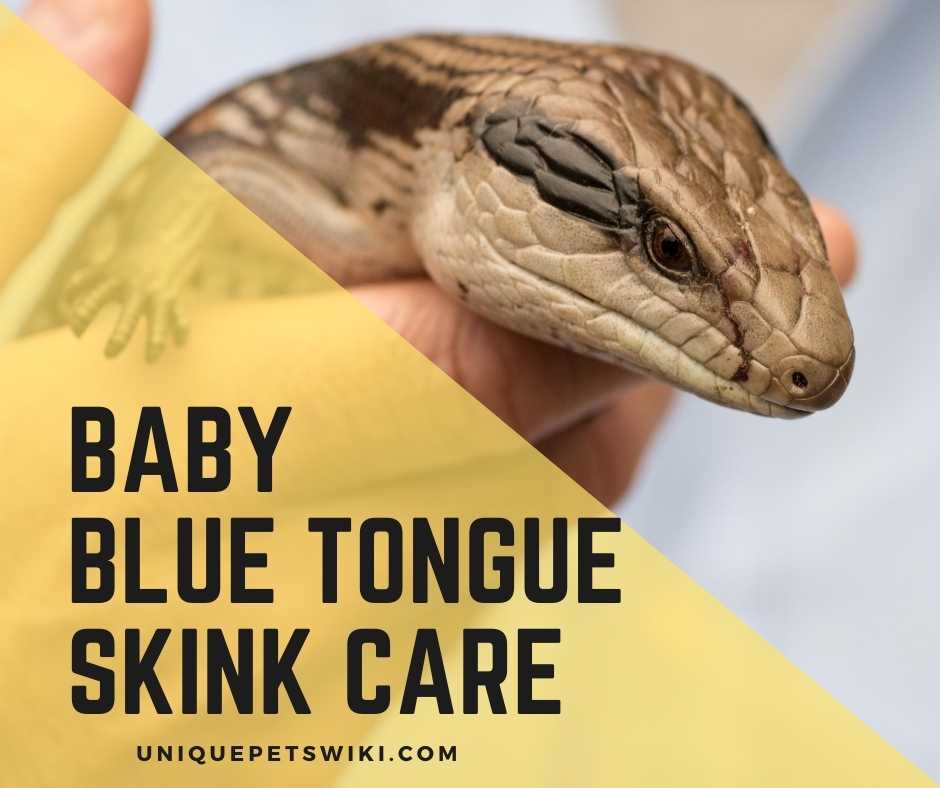Blue tongue skinks are a unique kind of lizard found predominantly in Australia and Indonesia. They are stout and heavy-bodied reptiles with relatively short legs that do not seem to complement their large bodies. We will discuss more about baby blue tongue skink care guides and tips as we go further in the article.
This species of reptiles are so-called “Blue Tongue” because of their characteristic bluish-color tongue believed to be a defense mechanism against predators. They are lovely lizards with an awesome disposition and make wonderful pets to any kind of herpetologist.
Caring for this bunch of docile pets is simple, easy, and less expensive. However, this can be a total disaster if you’re not well informed. That is why you need a care guide like this to keep you abreast of their needs and special requirements and how to care for them in captivity.
Contents
- Do Blue Tongue Skinks Make Good Pets?
- How Much Does A Baby Blue Tongue Skink Cost?
- Where Can I Buy A Baby Blue Tongue Skink?
- Accessories For Blue Tongue Skinks
- Common Blue Tongue Skinks Health Issues
- Activities, Exercises And Games For Baby Blue Tongue Skinks
- What Should You Feed Your Baby Blue Tongue Skinks?
- What Not To Feed To Your Baby Blue Tongue Skinks
- How To Care For A Baby Blue Tongue Skink
- Conclusion
Do Blue Tongue Skinks Make Good Pets?
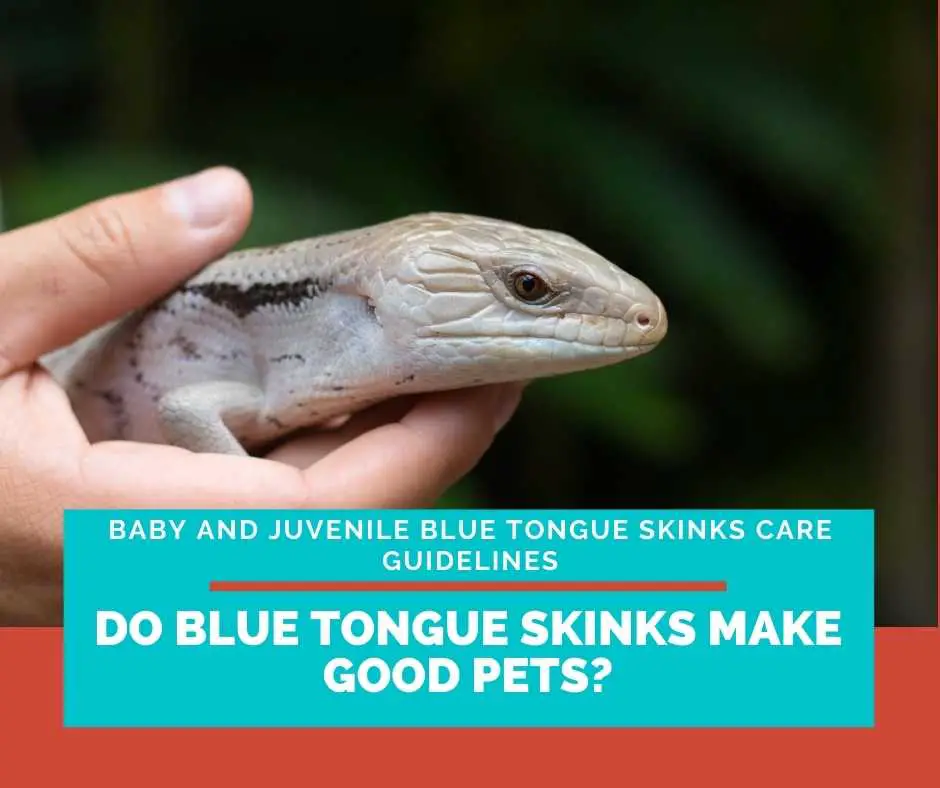
Blue Tongue skinks are a bunch of lovely and friendly pets. Not that they only look pretty and calm but they are intelligent, docile, and adapt pretty fast to their captive environment. To a horticulturist, blue tongue skinks are more than just pets.
They serve the economic significance of keeping down the number of grass destroying insects such as cockroaches, slugs, grasshoppers, snails, etc. Being that they are diurnal pets, they love to be handled and also enjoy staying around their owners.
This includes watching the TV or going on a short walk on a sunny day with the owner. If you are yet to get a skink as a pet, you probably are missing out on the fun of being these lizards around.
How Much Does A Baby Blue Tongue Skink Cost?
How much you will likely spend to buy a skink will be determined by your choice or preference of a certain species and morph over the others. If you are going for the readily available species like the Australian Northerns, you should be spending between $150 to $250.
However, if you’re fascinated by the most colorful morphs and species of blue tongue skinks, then you should get prepared to spend some hundreds or thousands of dollars.
In a nutshell, the price of a baby blue tongue skink is determined by the species, morph it belongs to and availability in the market.
Where Can I Buy A Baby Blue Tongue Skink?
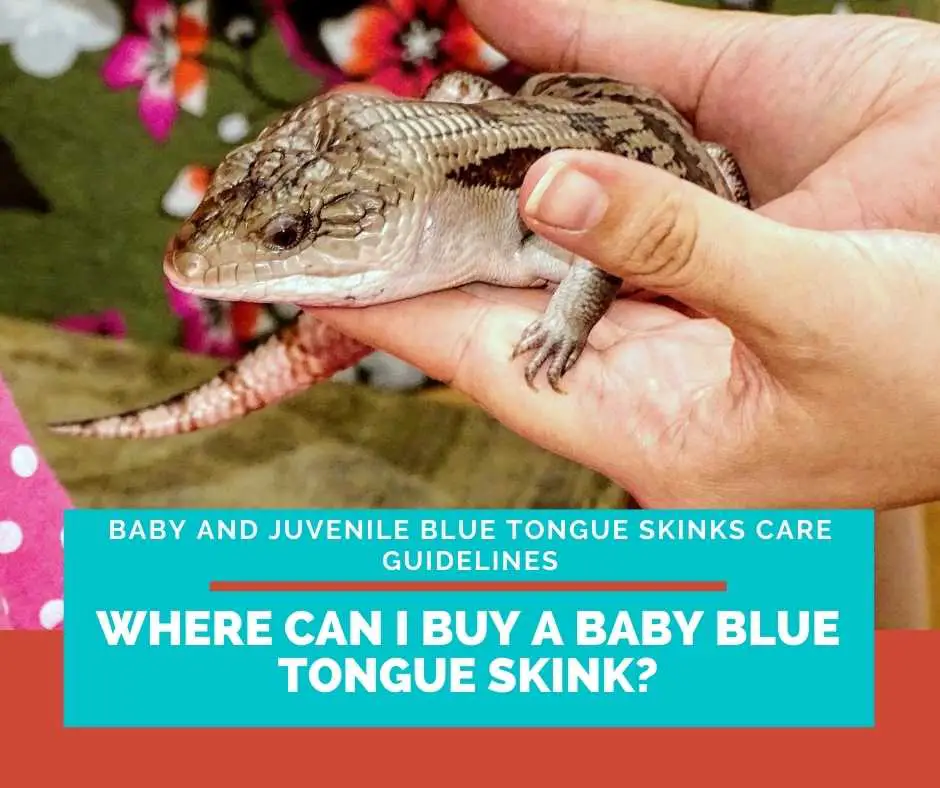
Before committing financially to get a skink make sure you check for the following health status:
- The skink must be active and alert.
- The skink must be free from any scars.
- The BTS must not have retained shed or wounds.
- The blue tongue skink must weigh normal and with a clean and clear mouth and nose.
- All toes and tail must be intact.
- There must not be a presence of mites and ticks.
That being said, the best places you can get healthy baby skinks include pet stores, from skink breeders themselves, classified ads, Facebook groups, and reptile rescues.
However, buying blue tongue skinks over the internet via sources like classified ads or Facebook groups pose a big problem of not getting exactly what you saw online before placing an order.
There are chances that the photos you see online are fabricated to look more colorful, brighter, and appealing than the animal truly is. Some factors such as lighting, the angle from which the photo is taken, and the camera can be responsible for this.
New to blue tongue skink? Check out the blue tongue skink care sheet now! We had listed out all the things you need to know about blue tongue skinks as pets. Check it now!
Accessories For Blue Tongue Skinks
Blue tongue skinks accessories include all fixtures in their enclosures that make life inside their cage no different from the wild. These accessories are essential because they help to stimulate foraging, hiding, burrowing, basking, and other activities essential for their health.
Enclosure accessories for skinks include plants, basking rock or stone, hides, substrates, food and water dishes, heating and lighting lamps, thermometer, and toys.
Common Blue Tongue Skinks Health Issues
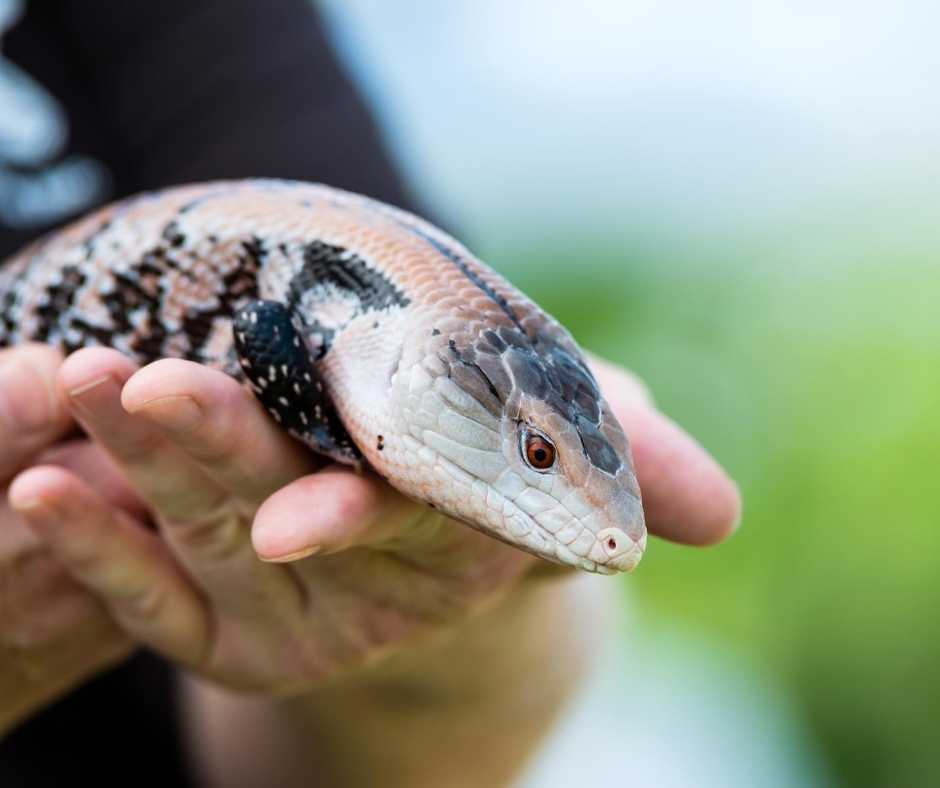
Health issues are diseases and illnesses that affect blue tongue skinks both in captivity and in the wild that you should be worried about if you see it in your skinks. A healthy blue tongue skink will always have a clear and pinky mouth, clear nose, and smooth scales.
Any sign of inflamed gums or wounds are symptoms that the skink is suffering from a disease. The most common diseases blue tongue skinks are predisposed to by nature of their captive conditions or poor hygiene and maintenance are:
- Metabolic bone disease- caused by poor diet, lack of calcium, and vitamin D3.
- Respiratory Infection- caused by high humidity levels, dirty enclosures, low temperatures, and poor diet.
- Mouth rot, dehydration, scale rot, retained shed, etc.
Activities, Exercises And Games For Baby Blue Tongue Skinks
A happy skink is a healthy skink and there are only two ways to ensure your skinks are happy. These are by creating an environment for fun activities, games, and bonding.
You can’t bond with your skink if you don’t play with them, so from time to time, you should play with your baby blue tongue skinks. Get them toys such as foraging balls, floaties, Wiffle balls, volleyballs, tunnels, hideouts, bridges, cat wands, crinkled wrapping papers, or cat toys.
What Should You Feed Your Baby Blue Tongue Skinks?
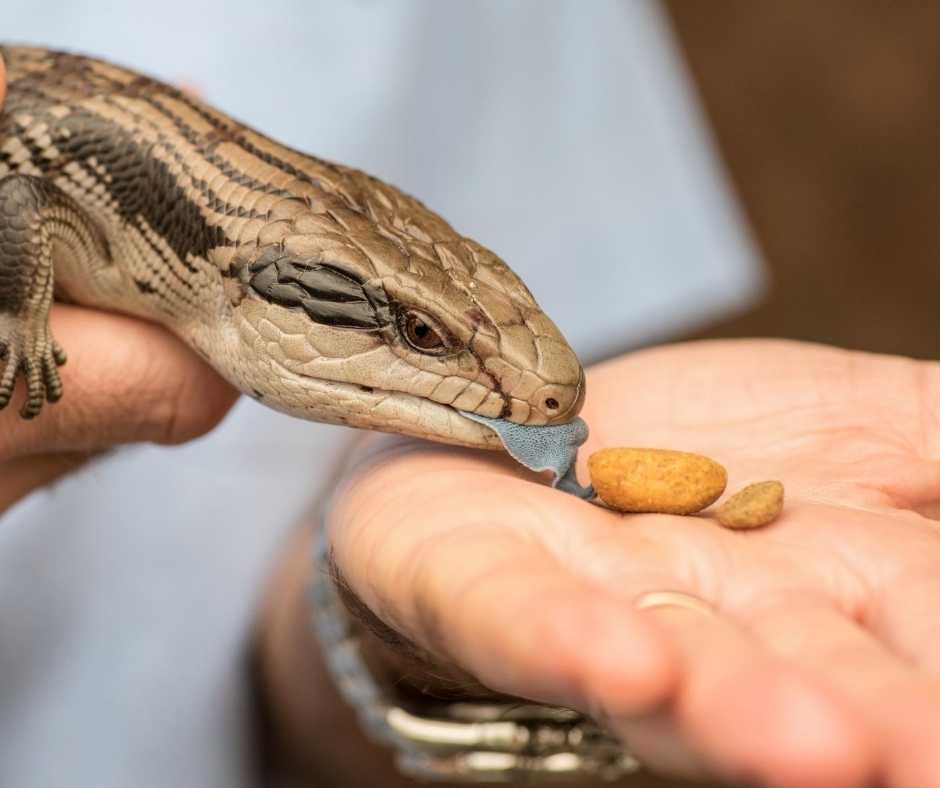
Blue tongue skinks are omnivorous, which means they live on both leafy plants and animal protein foods. Their diet comprises 50% plants and vegetables, 40% animal protein, 10% fruits, and water.
With this wide variety of food if administered adequately, is enough to keep captive skinks in good health without needing supplementation. On the contrary, since most of the foods are often not available or for some reasons your skink is a picky eater; dietary supplement is needed.
Dietary supplements are usually calcium and vitamin A and D3. In general, baby and juvenile skinks eat every day and they should be offered food as often as they would love to eat. As they get older, their requirement for food reduces to once or twice a week.
What Not To Feed To Your Baby Blue Tongue Skinks
Blue tongue skinks being omnivores does not mean “eat everything or anything”. Some foods pose a health risk to skinks simply because they are either high in phosphorus or are toxic.
These sets of foods span across vegetables, proteins, and fruits. They include rhubarb, lighting bugs, avocados, centipedes, spinach, monarch butterflies, garlic, onion (any other food in the onion family), spiders, eggplant, and canned meats rich in sodium.
Besides, captive blue tongue skinks should not for any reason be fed with wild-caught insects. This is to prevent your skinks from contaminating diseases.
How To Care For A Baby Blue Tongue Skink
It’s no secret that it is easy and less expensive to care for blue tongue skinks. But without proper knowledge on this subject matter, you can make a mess of your husbandry and end up spending more.
This section is dedicated to give you first-hand information on how to care for baby and adult blue tongue skinks.
Daily Feeding And Cleaning Routine
As with every living creature, a greater percentage of blue tongue skink care is providing them rich-in-nutrient foods. What distinguishes skinks from other animals is that they have a defined pattern of feeding.
Baby and juvenile skinks require food every day once or twice and in large quantities for proper growth and well-being. As they get older (attaining adulthood) their need for food reduces.
Adult skinks age 10-months and above should only be given food once or twice a week with exposure to proper temperatures and activities.
A daily cleaning routine involves clearing off uneaten food after every meal to avoid bacteria from breeding and spot cleaning the enclosure of any poops or fallen food particles.
Handling And Bonding
As mentioned earlier, skinks love to be handled or to have fun around their owners. This may include letting them crawl or climb on you or being cuddled. A newly purchased skink will show signs of hostility, stress, or lethargy which is normal.
New to blue tongue skink? Check out the blue tongue skink care sheet now! We had listed out all the things you need to know about blue tongue skinks as pets. Check it now!
During the first two weeks of purchase, it’s advisable to reduce the rate of handling and feeding till when the skink is fully settled and active. In general, inappropriate handling (where most of the skink’s body is dangling) will make the skink feel frightened and stressed.
An appropriate way of handling blue tongue skinks is by keeping their entire body supported with your underarm or with your two hands. This way will ensure that they are not scared.
Shedding
Young and growing skinks shed off their skins quite often than the adults and this usually happens in large pieces. When skinks are about to shed, their skins sometimes appear dull or there may even be a complete change in color.
Blue tongue skinks will be unable to shed if the humidity levels in the enclosure is too low. This situation may lead to retained shed or lethargy. To help them shed properly, try bathing them in warm water.
Bathing
Blue tongue skinks will love to soak in water if given the opportunity but they aren’t good swimmers. That is why we advise you to provide a water dish large enough to accommodate their body should they want to soak, but shallow enough to enable them to get out on their own.
Ideally to keep your skinks clean and free from foul smell, bath them in lukewarm water at most once a week. Alternatively, you can leave them in a shallow kid pool in the sun so they can bath and bask as well.
Brumation
The brumation period is one of the biggest concerns if not the biggest challenge for skink owners. This is the period of the year around winter and fall where the weather is extremely cold so skinks will naturally hibernate to survive the season.
During this period, skinks will naturally eat less or nothing except water and sleep more. In that case, you’ll need to reduce the daytime heat and light supply and maintain the night time temperatures to encourage brumation.
During this period too, no food should be offered to them because they wouldn’t be able to digest it. To avoid making irreversible mistakes during this period which can be dangerous to their health, read up for more.
Cleaning The Habitat
Aside from daily or regularly spot cleaning, skinks need a monthly or quarterly full cleaning of the entire enclosure including the substrates and all cage decorations.
Before returning all enclosure decorations and your skink to its cage, ensure that the enclosure and all accessories are thoroughly washed, disinfected, and properly dried. Full cleaning should be done during the day to ensure that your skink gets back to the cage on time.
Physical Behavioral Health Symptoms
Blue tongue skinks will show signs of stress, lethargy, loss of appetite, loss of weight, change in skin color, constipation, decayed tissues in the mouth, etc. if they are sick or infected.
Each of these symptoms mentioned depends on the kind of disease affecting the skink. Generally, irrespective of the type of disease or illness that affects a skink, it will display lethargy and loss of appetite as physical behavioral health symptoms.
Diarrhea And Dehydration
Dehydration is a condition in which water in the body of skinks drops below normal levels, usually caused by illness, or by not drinking enough. Prolonged diarrhea (frequent and watery bowel movements) will also lead to dehydration.
If dehydration is as a result of illness, it’s best to seek treatment from a veterinarian. However, for dehydration caused by not drinking enough water, simply provide them fresh and clean water every day.
Impaction
Impaction in blue tongue skinks is a condition in which evacuation of bowels is not frequent or a situation where the intestines become filled with hardened feces making pooping difficult and painful.
This is mostly caused by loose substrates, dehydration, overfeeding, or sand. Ensuring that possible causes of impaction is eliminated from your skink’s husbandry will prevent it from occurring.
Conclusion
By care, it means more than purchasing a blue tongue skink and leaving it in an enclosure with food. Not minding whether he eats, bask, poop, bath, or just sleeping and wishing he was in the wild.
Caring for blue tongue skinks implies making lovely pets out of your skinks. It means waking up with them in mind, being part of their daily activities, and going to bed with them in mind.
This care guide ensures that you give your skinks the best care and maintenance that will enhance their health and reduce the risk of diseases, illnesses or even death.
Read up for detailed information on areas of major interest. Do not hesitate to reach out to us should you have questions.
